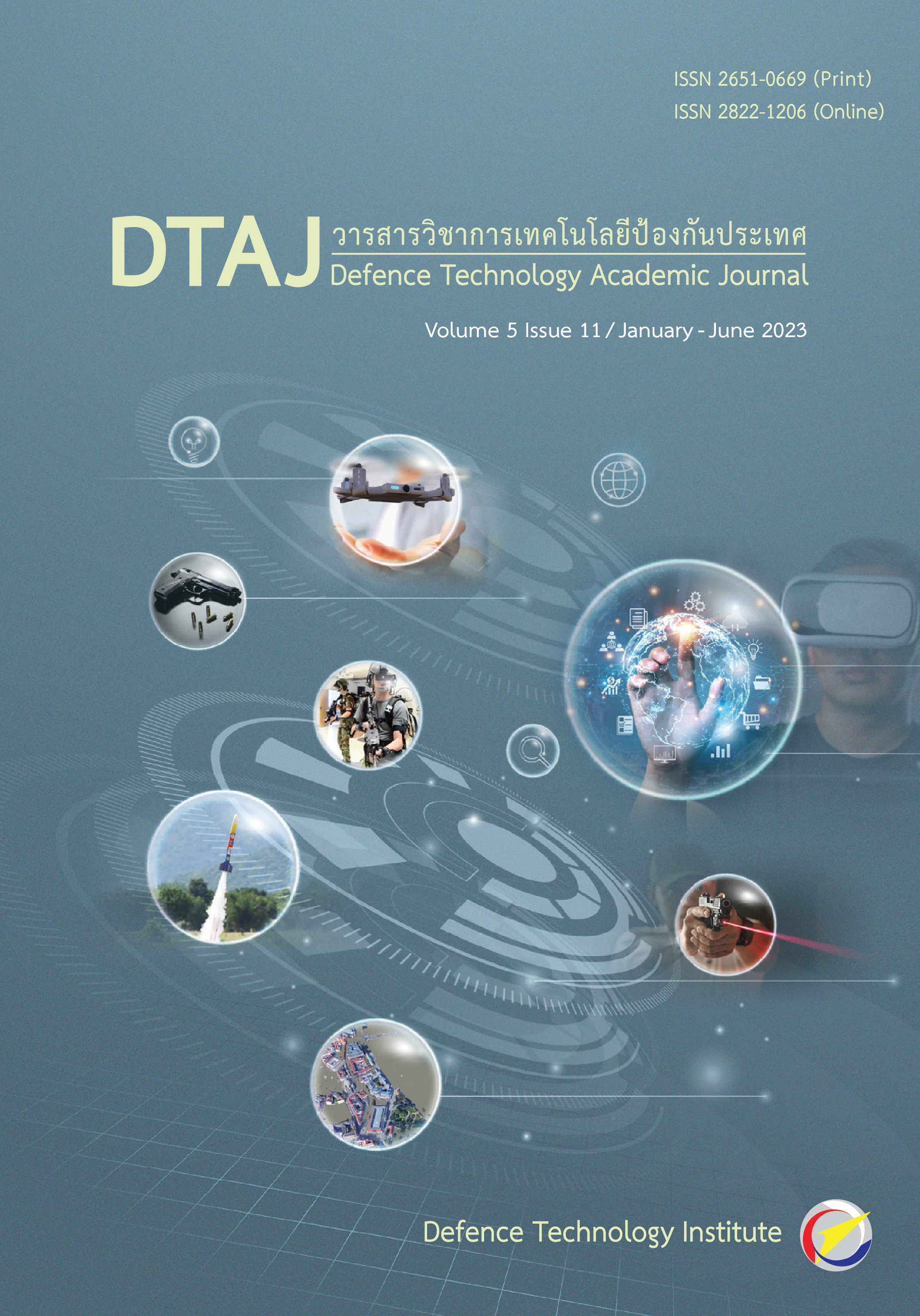A Development of Neural Network Model for Inventor Rocket Path-Motion Prediction
Main Article Content
Abstract
The trajectory of an artificial rocket is a non-linear equation of motion which can be solved in various method for instance by the method of an applied newton's law used for establish the equation of motion or by the numerical method of Runge Kutta 4th order. All of the equations of motion are modified from the principle of Modified Point Mass Trajectory Model (MPMTM) which will have to compare its mathematic solution. These methods are complicated to calculate and can cause an error. Therefore, in this article will present the application of back-propagation neural networks to predict the trajectory of a rocket in various input according to the actual usage conditions, which 5 inputs. The performance index is used to determine the optimal neural network. The results, the most efficient system identification neural network that has a performance index of 0.04 and this neural network will represent the trajectory of an artificial rocket instead of complex equations which will simplify and takes less time to calculate.
Downloads
Article Details

This work is licensed under a Creative Commons Attribution-NonCommercial-NoDerivatives 4.0 International License.
Journal of TCI is licensed under a Creative Commons Attribution-NonCommercial-NoDerivatives 4.0 International (CC BY-NC-ND 4.0) licence, unless otherwise stated. Please read our Policies page for more information...
References
A. Ko, K. Chan, D.-J. Sheen, C.-H. Lee, Y. Park, and S. W. Park, “Prediction and Analysis of the Aerodynamic Characteristics of a Spinning Projectile Based on Computational Fluid Dynamics,” Int. J. Aerosp. Eng., vol. 2020, pp. 1-12, 2020.
S. K. Gupta, S. Saxena, A. Singhal, and A. K. Ghosh, “Trajectory Correction Flight Control System using Pulsejet on an Artillery Rocket,” Def. Sci. J., vol. 58, no. 1, pp. 15-33, 2008.
Q.-B. Zhou, X.-T. Rui, G.-P. Wang, and J.-S. Zhang, “An Efficient and Modular Modeling for Launch Dynamics of Tubed Rockets on a Moving Launcher,” Def. Technol., vol. 17, No. 6, pp. 2011 - 2026, 2021.
L. An, L. Wang, N. Liu, J. Fu, and Y. Zhong, “A Novel Method for Estimating Pitch and Yaw of Rotating Projectiles Based on Dynamic Constraints,” Sensors, vol. 19, no. 23, p. 5096, 2019.
N. Nattapob, “Neural Network and Artificial Intelligent,” M.S. thesis, Fac. Eng., Bangkok Univ., Bangkok, Thailand, 2007. (in Thai)
I. Gandarilla, J. Montoya-Cháirez, V. Santibáñez, C. Aguilar-Avelar, and J. Moreno-Valenzuela, “Trajectory Tracking Control of a Self-balancing Robot via Adaptive Neural Networks,” Eng. Sci. Technol., Int. J., vol. 35, p. 101259, 2022.
I. Lopez-Sanchez, J. Moyrón, and J. Moreno-Valenzuela, “Adaptive Neural Network-based Trajectory Tracking Outer Loop Control for a Quadrotor,” Aerosp. Sci. Technol., vol. 129, p. 107847, 2022.
S. Shen and J. Xu, “Adaptive Neural Network-based Active Disturbance Rejection Flight Control of an Unmanned Helicopter,” Aerosp. Sci. Technol., vol. 119, p. 107062, 2021.
S. Choi and Y. J. Kim, “Artificial Neural Network Models for Airport Capacity Prediction,” J. Air Transp. Manag., vol. 97, p. 102146, 2021.
K. Balla, R. Sevilla, O. Hassan, and K. Morgan, “An Application of Neural Networks to the Prediction of Aerodynamic Coefficients of Aerofoils and Wings,” Appl. Math. Model., vol. 96, no. 10, pp. 456 - 479, 2021.
E. Nawapak, “Documents for Artificial Neural Networks Subject,” M.S. thesis, Fac. Eng., Khonkhan Univ., Khonkhan, Thailand, 2003. (in Thai)
A. Puitrakul. “An Introduction (?) to Deep Learning.” ARNONDORA.in.th. https:// arnondora.in.th/an-introduction-to-deep -learning/ (accessed July. 4, 2022) (in Thai)
H. T. Nguyen, N. R. , C. L. Walker, and E. A. Walker, A First Course in Fuzzy and Neural Control. Boca Raton, FL, USA: Chapman&Hall/CRC, 2002.


